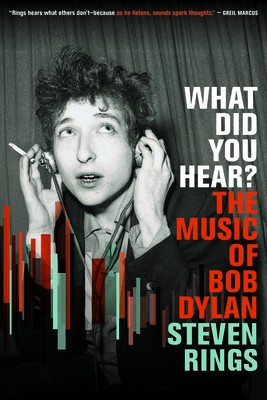
- We will send in 10–14 business days.
- Author: Steven Rings
- Publisher: University of Chicago Press
- ISBN-10: 0226842657
- ISBN-13: 9780226842653
- Format: 0 x 0 x 0 cm, hardcover
- Language: English
- SAVE -10% with code: EXTRA
Reviews
Description
Discover a new side of the songs of Bob Dylan, as a music theorist considers the possibilities ingrained in rough sounds, peculiar intonation, and a raspy voice. Folk troubadour, rock star, country crooner, cultural shapeshifter--for a musician who adopted so many styles, Bob Dylan always seems to be unmistakably himself. Whether you're a fan or a skeptic, you know his sound. A gritty voice that slides toward speech or out of key, a musical trademark that's been imitated and parodied in equal measure. A piano that may be out of tune. A wailing, ramshackle harmonica solo. But Dylan always sounds like Dylan, despite a musical legacy built on variation, flux, and flaws. Music theorist Steven Rings argues that such imperfections are central to understanding Dylan's songs and their appeal. These blemishes can invoke authenticity or persona, signal his social commitments, and betray his political shortcomings. Rings begins with (what else?) Dylan's voice, exploring its changeability, its unmistakable features, and its ability to build characters, including the speaker of "House of the Rising Sun," who is understood to be a Black woman. Rings then turns to Dylan as an instrumentalist, including his infamous adoption of the electric guitar in 1965, as well as his stylistically varied acoustic playing, which borrows sounds and techniques from Black blues musicians, among other influences. Rings charts the histories audible in Dylan's harmonica as well as the piano, central to his music-making for seventy years, beginning with his earliest imitations of Little Richard in Hibbing, Minnesota. Finally, Rings guides readers through one of Dylan's most famous songs, "A Hard Rain's A-Gonna Fall," listening for its musical sources as well as the welter of sounds that Dylan has made when performing it live. A companion website of audio and video examples helps readers notice the nuances and idiosyncrasies inherent to Dylan's work and, even more importantly, their effects. A close look at an under-discussed but glaringly dominant aspect of Dylan's oeuvre, What Did You Hear? offers a fresh understanding of a singular performer, his musical choices, and the meanings that can be found in his imperfect sounds.EXTRA 10 % discount with code: EXTRA
The promotion ends in 16d.02:58:06
The discount code is valid when purchasing from 10 €. Discounts do not stack.
- Author: Steven Rings
- Publisher: University of Chicago Press
- ISBN-10: 0226842657
- ISBN-13: 9780226842653
- Format: 0 x 0 x 0 cm, hardcover
- Language: English English


Reviews